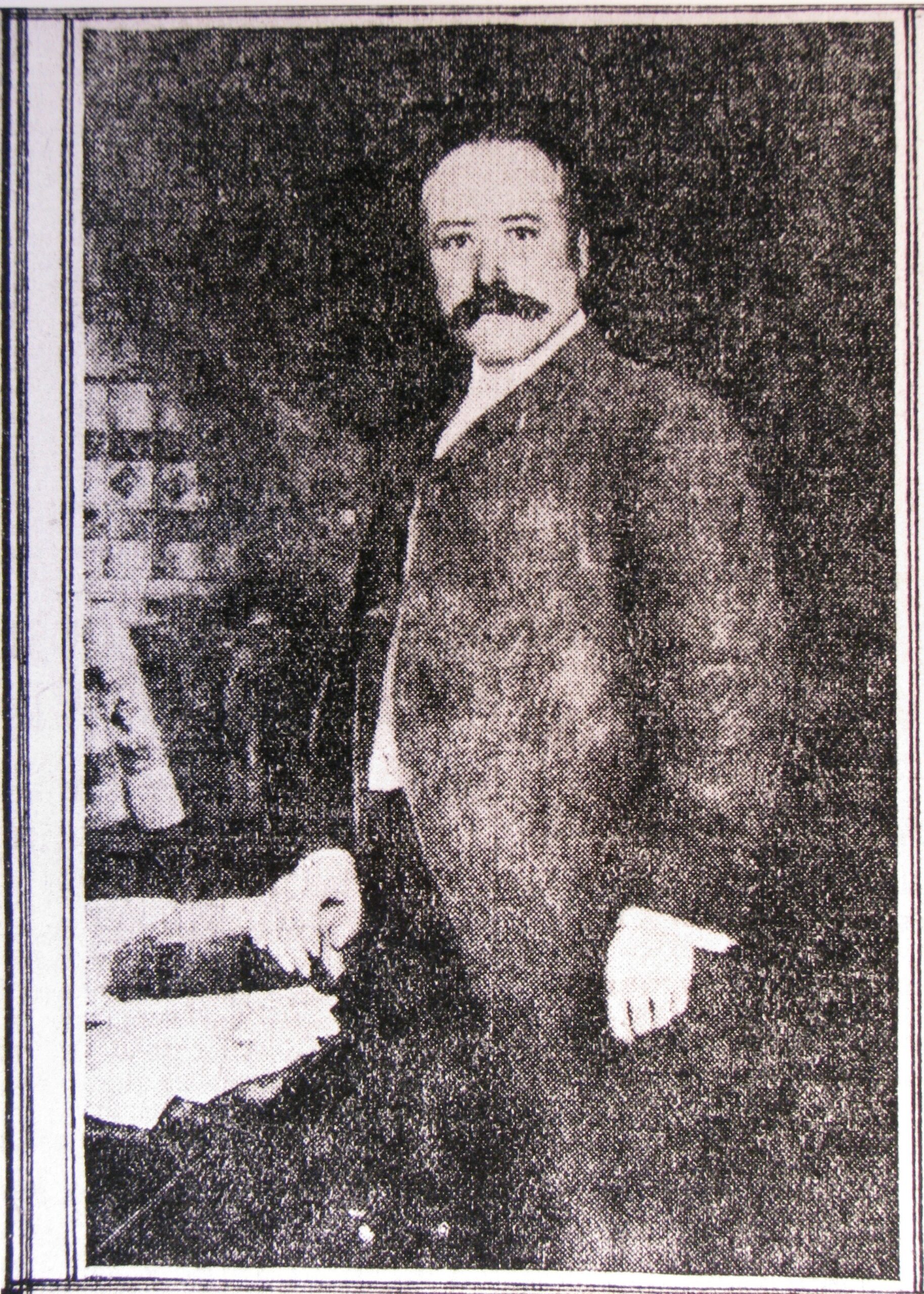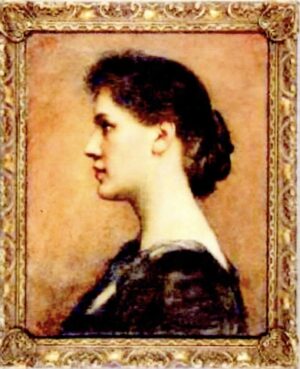PARKER, Judge Alton Brooks
Description:
Three-quarter length, standing before a bookcase and red curtain, dressed in black cutaway coat, black trousers, with white waistcoat, a turn-down collar and a white four-in-hand scarf.
Location:
Present Whereabouts Unknown.
Exhibition:
M. KNOEDLER & CO., 355, Fifth Avenue (corner 34th Street), New York, November 23 – December 3, 1904.
Bibliography:
The World, New York, July 9, 1904
The World, New York, July 13, 1904
New York Sun, July 13, 1904
Town & Country, New York, July 16, 1904
New York Sun, July 26, 1904
Washington Times, July 26, 1904
New York Press, July 26, 1904
Washington Post, July 26, 1904
New York Times, July 26, 1904
New York Tribune, July 26, 1904
Buffalo Courier, Tuesday, July 26, 1904, p. 3
Los Angeles Herald, Volume XXXI, Number 301, July 26, 1904, p. 2
New Yorker Staats Zeitung, July 26, 1904
New York Herald, July 27, 1904
Town & Country, New York, July 30, 1904
Harper’s Weekly, New York, August 6, 1904
New York Herald, October 6, 1904
The Globe, New York, November 26, 1904
The New York Press, Sunday morning, November 27, 1904
Town Topics, December 1, 1904
Financial Times, New York, December 3, 1904
Town & Country, New York, December 3, 1904
The Tammany Times, New York, December 31, 1904.
American Art News, Vol. 3. No. 63, New York, January 21, 1905, p. 2
The sitter was born at Cortland, New York on May 14, 1852 and educated at McGill University and the University of Toronto. He was admitted to the Bar and practised law at Kingston, rising to Chief Justice of the Court of Appeals of New York between January 1, 1898 and August 5, 1904. He resigned in order to accept Democratic nomination for President on July 9, 1904. He was massively defeated by Theodore Roosevelt. Afterwards, though still politically active he practised law with the firm of Parker, Marshall, Miller and Auchincloss. He married firstly Mary L. Schoonmaker on October 16, 1873, and secondly Amelia Day Campbell on January 26, 1923. He died on May 10, 1926.
The portrait was said to be five feet in height. According to the Buffalo Courier, July 26, 1904, it was begun July 5, 1904 at Esopus, New York, ‘before the St Louis Convention had got into its swing’ and apparently fifteen sittings were given, and finished by July 26. All the cuttings make a point of saying that the books are New York Law Reports and the writings of Thomas Jefferson, as well as, on the desk, ‘Cooley’s Constitutional Limitations’ and several yellow pieces of paper reported to be telegram blanks, the Buffalo Courier adding naughtily: ‘Whatever the artist intended, there will be no persuading the lay mind that this yellow paper in not the semblance of the familiar stationery of the Western Union Telegraph Company, two pieces of which, one sent and one received, caused some commotion in St. Louis on July 9, 1904.’ It goes on to add critically, ‘Mr. Muller-Ury’s brush as counterfeited the ruddy, healthful complexion perfectly. The Judge has fine brown eyes of good size, and Mr Muller-Ury has made them so shine that the portrait almost has the appearance of life, but the brush has left out the keen, judicial glance which impresses everyone who meets Judge Parker. One may depened on the people who know Judge Parker to say, when they see the portrait: “He’s wiser looking that that.”’
The New York Press, in reviewing Muller-Ury’s show at Knoedler’s that November, singled out Parker’s portrait for mockery under the headline ‘PARKER’S FOREBODINGS SHOWN IN HIS PICTURE – Strange Expression of Tense Terror in Portrait at Knoedler Galleries’:
‘If any one has doubts as to the act that Judge Parker knew what was coming to him for a couple of months before that fateful November 8, he should look at the new portrait of the Democratic candidate now on exhibition at the Knoedler galleries. The portrait is one of a group of recent works by A. Muller-Ury. Judge Parker is represented in three-quarters length standing beside a table, with the right hand resting on a law book. He wears a frock coat and a white waistcoat and tie, but all these accessories fade away from the spectator when he catches sight of the sitter’s face. The “Man at Last” stares straight before him, his eyes arrested by the sight of some visible horror that is coming toward him with unrelenting force and from which there is no possible escape. He is fascinated, terror stricken; and the lines of his face express no less a sense of fear. Probably Mr. Muller-Ury intended no such harrowing effect, for he is painter who above all things strives to please his sitters and make them look as “lovely” as possible. Shown with the title “The Impending Doom,” this portrait would fit capitally.’
The picture was reported as being sent to the Democratic headquarters, then at the Hoffman House, a hotel in downtown New York which was the informal rendezvous for Democratic political meetings until 15 March 1915 when it was sold for redevelopment, after which it was demolished. It may never have hung there very long, may have been returned to the Judge and hung in his law offices, or at one of his homes. The person who ordered this big portrait is not stated, but The New York Times, July 26, 1904 states that it was ‘ordered before the National Convention, showing how certain the particular managers were that he would be nominated.’
It would also be quite true to say that Muller-Ury may have solicited the painting of his portrait, as he did many celebrities, politicians etc as this would be great publicity for him, as it was indeed judging by the cuttings. He had painted Mrs. William Sheehan in November and December 1903 (now in the Buffalo and Erie Historical Society) whose husband had nominated Parker for the Presidential ticket.




![TERRY, Mme. Francesco [Francois] (Antonia Sanchez)](https://www.muller-ury.com/wp-content/uploads/2017/10/Antonia-Terry-scaled-300x424.jpg)
![OELRICHS, [Natalie] Lily (Later Mrs Peter Martin; Later Duchess of Mecklenburg)](https://www.muller-ury.com/wp-content/uploads/2018/11/digiScanLtd.com-Conrad69-1-300x511.jpg)